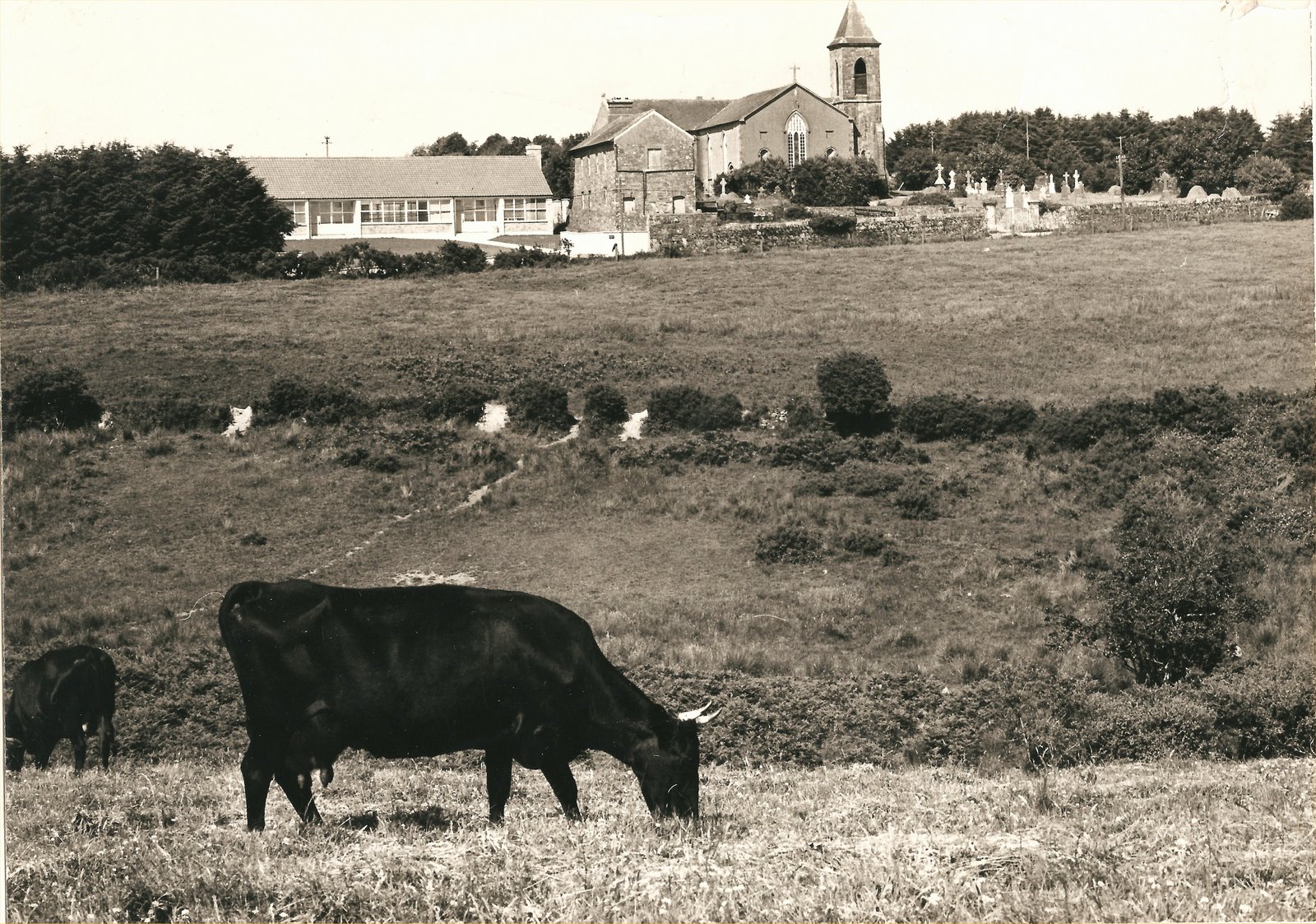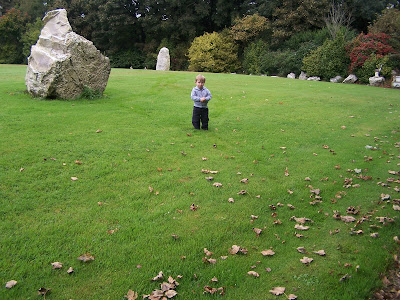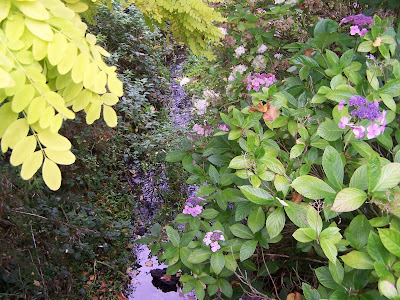Thursday, December 4, 2008
Saturday, November 29, 2008
Fáilte go seannosbeo.ie
Fáilte go seannosbeo.ie, suíomh an togra amhránaíochta Dúthaigh Gheal Déise. Gheobhaidh tú eolas anseo maidir le mórchuid amhrán a bhaineann leis na Déise agus le traidisiún amhránaíochta Ghaeltacht na nDéise. Aireofar agus chífear, anseo, roinnt taifeadtaí a deineadh sa cheantar i gcaitheamh na mblianta, rud a chuirfidh ar chumas an chuairteora amhrán nó amhráin de chuid na dúiche seo a fhoghlaim. Tá leaganacha scrite éagsúla de na hamhráin curtha ar fáil, maille le fuaimrianta agus físeáin agus táthair ag súil le go bhfillfidh an cuairteoir arís agus arís eile le bheith ag tarraingt ón tobar ceolmhar seo.
Ba mhaith le coiste Dhúthaigh Gheal Déise buíochas a ghabháil leis na daoine agus leis na heagraíochtaí seo a leanas:
An Comhairle Ealaíon; Comhairle Contae Phort Láirge; Údarás na Gaeltachta; Meitheal Forbartha na Gaeltachta; Comhlacht Forbartha na nDéise; Coiste Forbartha an tSean Phobail; Comhairle Pobail na Rinne; Proinsias Ó Drisceoil, Tony Patterson, Michéal Ó Diarmada agus an comhluadar ar fad ag Sean Nós Beo; Niall Corby agus Doireann de Faoite; Eagarthóirí 'An Linn Bhuí'; Fionn Mac Giolla Chuda, Seamus Ó hAodha agus an comhlacht teilifíse Nemeton teo; Seán Ua Súilleabháin, Roinn na Nua-Gaeilge, Coláiste na hOllscoile, Corcaigh.
Gabhaimid buíochas speisialta, dar ndóigh, leis na hamhránaithe ar fad a thug go fial a bhfuil áirithe d'amhráin anseo. Is iad sin:
Seamus Ó Cionnfhaolaidh; Eibhlín Bean Uí Dhonnchadha; Déuglán de Paor; Eibhlís Bean de Paor; Seamus Ó Cobhthaigh; Áine Uí Fhoghlú; Muiris Ó Criostóir.
Cuimhnímid go háirithe orthu san a bhfuil amhráin dá gcuid sa chnuasach seo ach ná fuil in ár measc a thuilleadh: Dómhnall Ó Cionnfhaolaidh; Tadhg Cundún agus Nioclás Tóibín. Is binne iad na Flaithis dóibh agus ar dheis Dé go rabhadar.
Ba mhaith le coiste Dhúthaigh Gheal Déise buíochas a ghabháil leis na daoine agus leis na heagraíochtaí seo a leanas:
An Comhairle Ealaíon; Comhairle Contae Phort Láirge; Údarás na Gaeltachta; Meitheal Forbartha na Gaeltachta; Comhlacht Forbartha na nDéise; Coiste Forbartha an tSean Phobail; Comhairle Pobail na Rinne; Proinsias Ó Drisceoil, Tony Patterson, Michéal Ó Diarmada agus an comhluadar ar fad ag Sean Nós Beo; Niall Corby agus Doireann de Faoite; Eagarthóirí 'An Linn Bhuí'; Fionn Mac Giolla Chuda, Seamus Ó hAodha agus an comhlacht teilifíse Nemeton teo; Seán Ua Súilleabháin, Roinn na Nua-Gaeilge, Coláiste na hOllscoile, Corcaigh.
Gabhaimid buíochas speisialta, dar ndóigh, leis na hamhránaithe ar fad a thug go fial a bhfuil áirithe d'amhráin anseo. Is iad sin:
Seamus Ó Cionnfhaolaidh; Eibhlín Bean Uí Dhonnchadha; Déuglán de Paor; Eibhlís Bean de Paor; Seamus Ó Cobhthaigh; Áine Uí Fhoghlú; Muiris Ó Criostóir.
Cuimhnímid go háirithe orthu san a bhfuil amhráin dá gcuid sa chnuasach seo ach ná fuil in ár measc a thuilleadh: Dómhnall Ó Cionnfhaolaidh; Tadhg Cundún agus Nioclás Tóibín. Is binne iad na Flaithis dóibh agus ar dheis Dé go rabhadar.
Priosuin Chluain Meanla
tp://www.youtube.com/watch?v=NLXfdp3UILU&eurl=http://www.seannosbeo.ie/showsong.php?id=67&info=0
Monday, November 24, 2008
Friday, November 21, 2008
Thursday, November 20, 2008
Tuesday, November 11, 2008
Monday, November 3, 2008
Wednesday, October 8, 2008
Sunday, September 28, 2008
Sunday, September 21, 2008
Famine Graveyard Relig an tSleibh

On Sunday 31st of August a large crowd gathered at Relig An tSleibh for the annual Mass. Fr. Griffin said the Mass, Nora Fahy did the readings and music was provided by Kathleen Tobin. Tea was served in the Seanachaí after.
This land is situated about 2½ miles South-West of Dungarvan. In July 1847 the Clerk was directed to advertise for contractors to erect a stone wall around the site, four feet high and five feet wide, faced with stones on both sides ’the stones to be laid on edge.’ Two men were employed assisted by the Workhouse inmates. On 28 August William Veale’s tender to make an iron gate 5½ feet high by 8 feet wide for 14 shillings was accepted. The graveyard was to be ready in a matter of weeks.
In early September the Guardians ordered that any paupers who died were to be buried in the new graveyard for Grange and Ardmore until the site at Slievegrine was opened.
On 18 November the Master asked that alternative employment be provided for the able-bodied men as the graveyard at Slievegrine would be sub-soiled in nine or ten days. We can assume from this that the graveyard at Slievegrine opened about the end of November 1847. In some Unions the Guardians were forced to use the Workhouse grounds as temporary graveyards. We do not know if this was the case in Dungarvan.Father Patrick Toomy (1799-1867) a member of the local Augustinian order, was long remembered for the work he did during the Famine. It was said that he used to wait at the back gate of the Workhouse when the carts carrying the dead were being removed. Having checked the corpses to ensure they were dead he blessed them with water from a nearby holy well. He died in 1867 and was buried within the church in St. Augustine Street, Dungarvan. 1
The Kett family who lived next to the graveyard at Slievegrine were caretakers for many years. In 1866 Denis Kett was employed as caretaker and in the 1870s John Kett received 15 shillings as a half years salary. He was still employed in the 1890s.
In the early 1860s some members of the Board of Guardians felt that a small monument should be erected at Slievegrine to commemorate those buried there, but nothing came of the idea. The subject came up again in August 1866 when it was proposed that a monument should be erected at a cost not exceeding £50.
The Poor Law Commissioners contacted the Guardians wishing to learn what the monument was for. The Guardians informed them that it was to be built to ’compliment the Right Hon. Lord Stuart de Decies, who has given the burial ground, as well as to commemorate the memory of those whose ashes lie buried there.’ The Commissioners were unhappy with this explanation, probably because the Guardians main purpose appeared to be to commemorate Villiers Stuart.
Denis McGrath’s plan for the monument was accepted in August 1866 but the Commissioners objected once again. The plan was eventually dropped, probably because of the opposition from the Commissioners. According to Seamus Clandillon writing in 1925 a wooden cross marked the site. He recalled the story of a woman who was being taken for burial to Reilig An tSléibhe who regained consciousness and lived to a good old age. It was not until 1953 that a monument was finally erected at Slievegrine. The unveiling took place as part of the celebrations of the An Tostal festival in Dungarvan on Sunday 19 April 1953. This monument consists of a large plain limestone cross with inscriptions in Irish and English. However, the main part of the inscription refers to the Marian Year with the reference to the Famine victims given less emphasis.
On 20 August 1995 a commemorative mass was celebrated at Reilig An tSléibhe by Dr. William Lee, Bishop of Waterford and Lismore. A moving recital of Na Prataí Dubha was given by Peig, Bean Uí Reagáin. The old limestone cross was cleaned and a more fitting memorial to those buried there was unveiled.
Subscribe to:
Comments (Atom)



















































